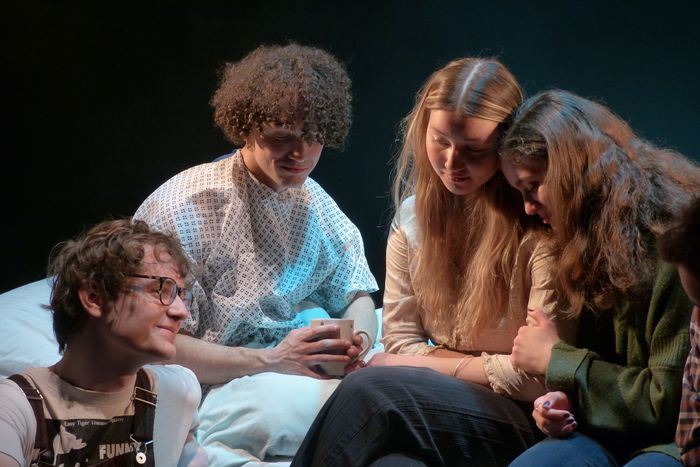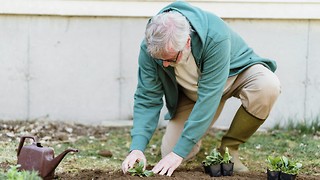Beyond the backdrop: the art of set design
Abril Duarte González explores the creative process behind set design, the limitations it faces, and its place in the future in conversation with Isabella Bottle

Theatres are often thought of as little more than black boxes – bare spaces with sound and lighting fixtures. What transforms them into immersive experiences is set design. More than just an aesthetic feature, set design uses the visual to manipulate space, guiding the audience’s perception and shaping actors’ movements. Sets are not just backdrops: they are active spaces for transformation. However, striking a balance between aesthetics and functionality, vision and constraints, is one of the biggest challenges in designing sets – especially in student theatre.
To understand this process better, I spoke to Isabella Bottle, a recent Cambridge graduate who worked on creating thirteen sets during her time in student theatre. As someone with a little less familiarity with the intricacies of Cambridge’s theatre scene, she helped me uncover the unsung creative process behind set design. What quickly became clear was that set design is a collaborative, evolving effort – something Bottle says leads to the “most ambitious outcomes,” capable of making “shapeshifting” possible.
Inspiration comes in waves – sometimes from other productions, sometimes from art, film or personal memory. Bottle’s first set was for Tick, Tick… Boom! in 2022. Drawing from photographs her father had taken in 1990s New York, as well as Saul Bass’s title sequence for West Side Story (1961), she sought to capture a similar sense of movement and life. Art remains a constant reference point for her – Picasso, Hockney, and Matisse informed her use of bold colours and abstract sets in the 2023 Lent Term Musical, Kiss Me, Kate, and CUADC/Footlights Pantomime, Dick Whittington.
“The process is intensely collaborative, especially in student theatre”
Inspiration alone doesn’t build a set. The process is intensely collaborative, especially in student theatre, where “everyone is learning on the job.” Directors often have an initial vision, which is then refined through conversations that balance “practical challenges and creative opportunities.” Working with the production’s technical director plays a crucial role in managing budgets and ensuring the set is built on time; working with lighting designers and costume teams helps maintain that aesthetic cohesion.
In Cambridge student theatre, however, there are real limitations – financial, spatial, and logistical. Every show is different, and not all ideas are feasible. Bottle recalls the 2024 Gilbert and Sullivan Society’s production of The Pirates of Penzance, which took place on the edge of a cliff at the Minack Theatre in Cornwall. Designers have to multi-task, whether through modular set pieces or the use of projection and light to create depth and movement.
But even within the constraints of a more traditional theatre spaces like the ADC, ingenuity thrives. If you take a look at the archive, students have created everything from lakes to revolving stages. The question, then, is not just what a set should look like, but what it can do for the performance.
“Every show is different, and not all ideas are feasible”
The configuration of a stage affects how actors move, interact, and are perceived by the audience. Bottle comments that speaking to actors and recognising how they understand their characters can sometimes be another source of inspiration. Platforms, staircases, and doors become more than just props: they shape blocking and physicality, making characters’ movements feel more natural and dynamic. The bottom line is that a well-designed set – whether elaborate or strikingly minimalist – helps immerse actors in their world, offering tangible visual cues that inform their performance.
As for the future of set design in student theatre? Unfortunately, it’s somewhat uncertain. Bottle hopes to see more sustainability in set design, having become increasingly aware of the waste produced by theatre production. From my own experience of Camdram, projection and interactive elements could hold great potential for this reason – allowing designers to create varied spaces without the need for excessive materials.
Still, Bottle remains partial to the tactile quality of hand-painted, material sets. She argues they retain a value that digital projections may never fully replace. I, on the other hand, lean towards more minimalist sets. When done well, they force the audience to engage more actively, eliminating unnecessary ornamentation and emphasising functionality, cost-effectiveness and environmental consciousness.
Whatever the case, one thing is clear: the next time you are sat in the audience at Pembroke New Cellars or the ADC, look beyond the actors. Theatre is more than just the performance – it’s an immersive, visual experience, shaped as much by the set as by the people who bring it to life. It is a space built for transformation, for the possibility of “shapeshifting.”
Want to share your thoughts on this article? Send us a letter to letters@varsity.co.uk or by using this form.
 News / Uni Scout and Guide Club affirms trans inclusion 12 December 2025
News / Uni Scout and Guide Club affirms trans inclusion 12 December 2025 News / Pembroke to convert listed office building into accom9 December 2025
News / Pembroke to convert listed office building into accom9 December 2025 News / Cambridge Vet School gets lifeline year to stay accredited28 November 2025
News / Cambridge Vet School gets lifeline year to stay accredited28 November 2025 Features / Searching for community in queer Cambridge10 December 2025
Features / Searching for community in queer Cambridge10 December 2025 News / Uni redundancy consultation ‘falls short of legal duties’, unions say6 December 2025
News / Uni redundancy consultation ‘falls short of legal duties’, unions say6 December 2025









